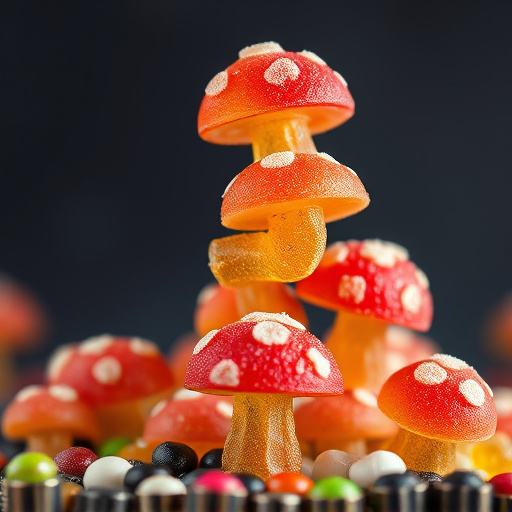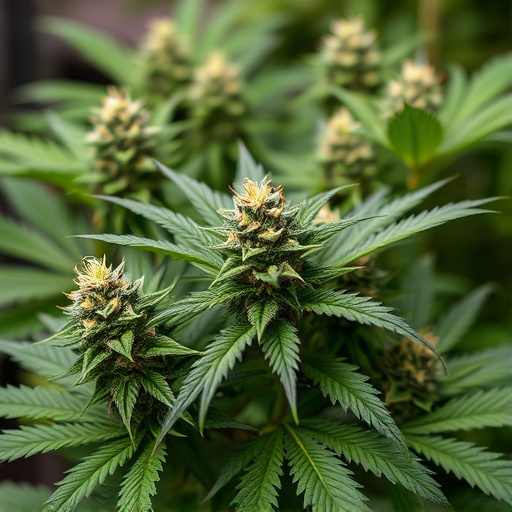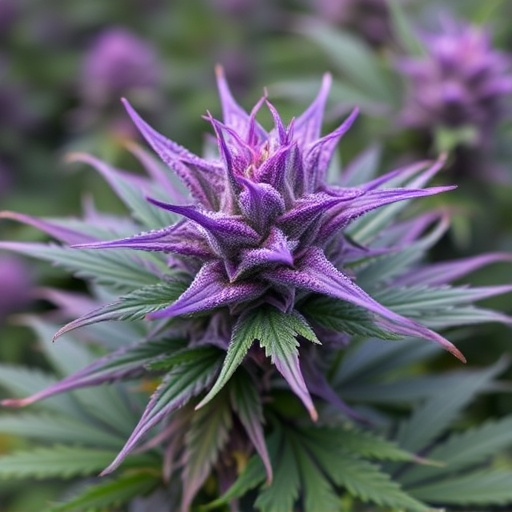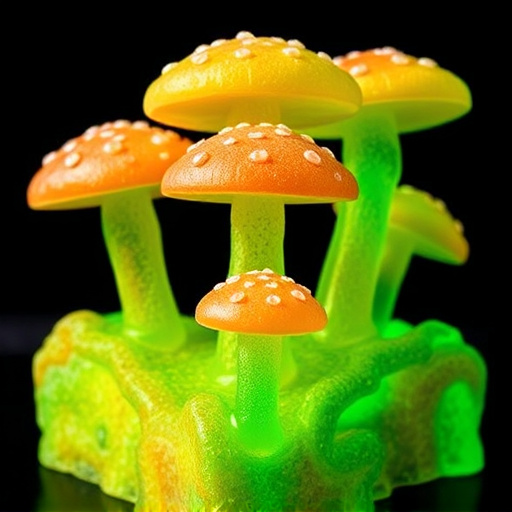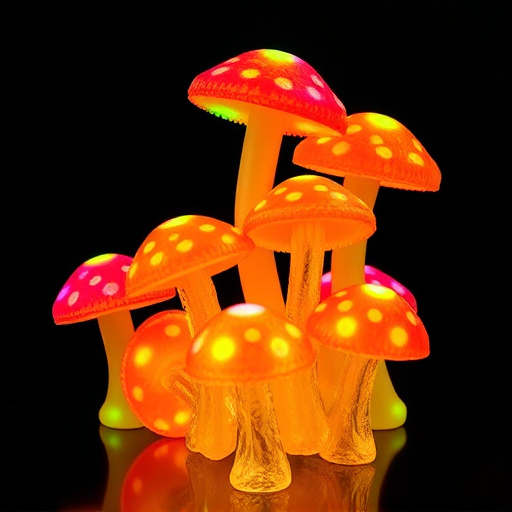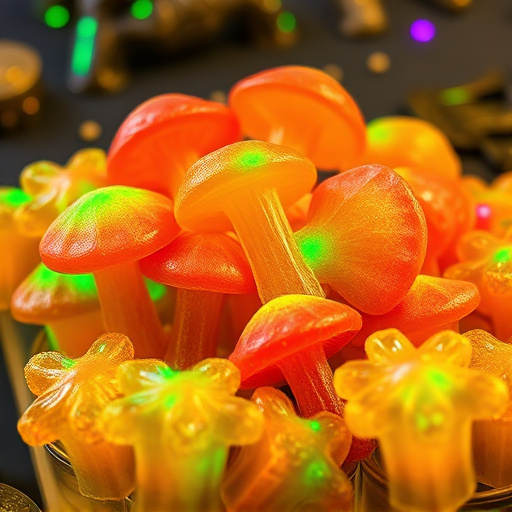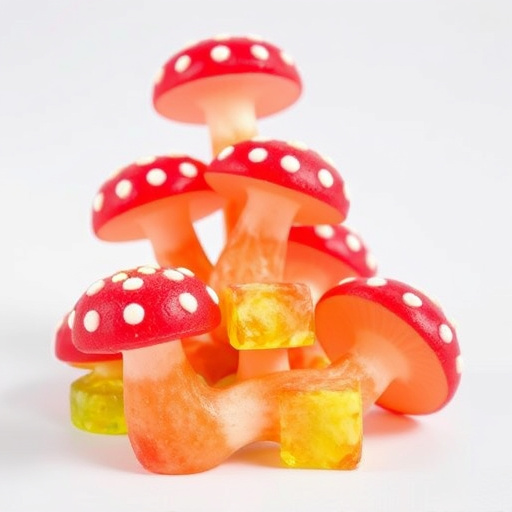Magic mushrooms have a long history in human culture, used ritually and spiritually by ancient civilizations and indigenous cultures worldwide. Interest waned but has recently resurged due to scientific exploration and cultural re-evaluation, leading to innovative products like gummies. These gummies combine psilocybin with convenience and sweetness, offering easier consumption and longer effects compared to traditional methods. The growing trend in both recreational and therapeutic settings highlights ongoing interest in safely exploring psilocybin's benefits. The history of magic mushroom gummies is rooted in their cultural usage, but societal evolution has drastically impacted their perception and regulation, with varying legal statuses globally. Responsible use and evidence-based policies are crucial to balancing accessibility and public safety.
“Unraveling the intriguing world of Magic Mushroom Gummies for Sale, we explore a modern twist on an ancient practice. With a history spanning centuries, magic mushrooms have been part of ritualistic and spiritual ceremonies globally. Today, their integration into the form of gummies represents a significant evolution in delivery methods. This article delves into the past and present of Magic Mushroom Gummies Usage, examining its rise in popularity, the science behind psilocybin, and navigating the legal landscape to ensure safety for curious minds seeking this ancient remedy in a contemporary guise.”
- A Brief History of Magic Mushroom Consumption: From Ancient Rituals to Modern Curiosity
- The Evolution of Gummies: A Sweet and Discreet Delivery Method for Psilocybin
- Exploring the Legality and Safety of Magic Mushroom Gummies for Sale
A Brief History of Magic Mushroom Consumption: From Ancient Rituals to Modern Curiosity
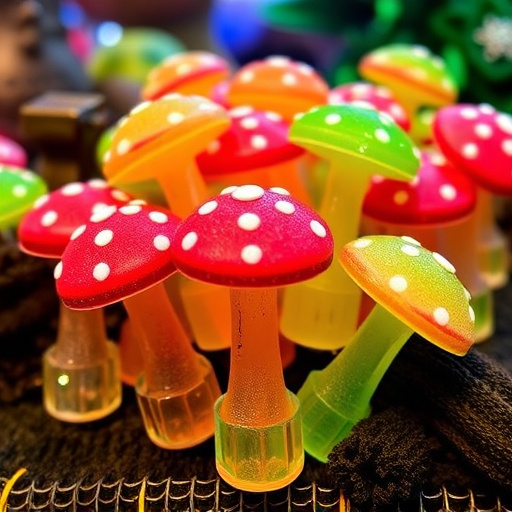
Magic mushrooms have been part of human culture for centuries, with a history that stretches back to ancient civilizations. Their use in rituals and spiritual practices is well-documented, with indigenous cultures around the world incorporating these fungi into their traditional beliefs and ceremonies. In many societies, magic mushrooms were seen as sacred entities, believed to connect individuals with the divine or unlock hidden realms of consciousness.
Over time, as societies evolved, so did the perception of these fungi. While they retained some significance in indigenous communities, interest waned in the modern world. It wasn’t until recent decades that there was a resurgence in curiosity about magic mushrooms, driven by both scientific exploration and cultural re-evaluation. This renewed interest led to the development of innovative products like gummies, offering a new way to experience the effects of psilocybin while potentially providing a more accessible and controlled method of consumption compared to traditional methods.
The Evolution of Gummies: A Sweet and Discreet Delivery Method for Psilocybin
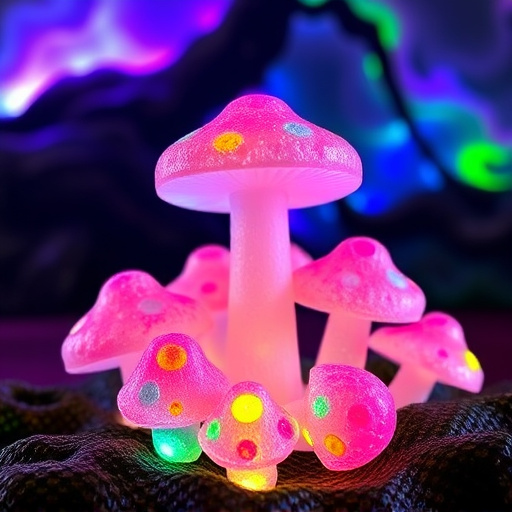
The evolution of gummies as a delivery method for psilocybin, the active compound in magic mushrooms, is a testament to the versatility and adaptability of this ancient substance in modern times. Historically, magic mushrooms have been consumed through various methods, from traditional brewing into teas to cutting and grinding them into powders. However, as attitudes towards psychedelics shifted and research began to explore their therapeutic potential, a more discreet and palatable option was sought. This led to the introduction of magic mushroom gummies, which combine the powerful effects of psilocybin with the convenience and sweetness of a gummy bear or candy.
The history of magic mushroom gummies usage is relatively recent but rapidly growing. They offer several advantages over traditional methods, such as ease of consumption, longer-lasting effects due to controlled release mechanisms, and reduced bitterness compared to powdered forms. As a result, they have become increasingly popular among both recreational users seeking enhanced experiences and therapeutic patients undergoing psychedelic-assisted therapy for conditions like depression, anxiety, and PTSD. This evolution in delivery methods reflects the ongoing interest in exploring the benefits of psilocybin in a safe, controlled, and accessible manner.
Exploring the Legality and Safety of Magic Mushroom Gummies for Sale
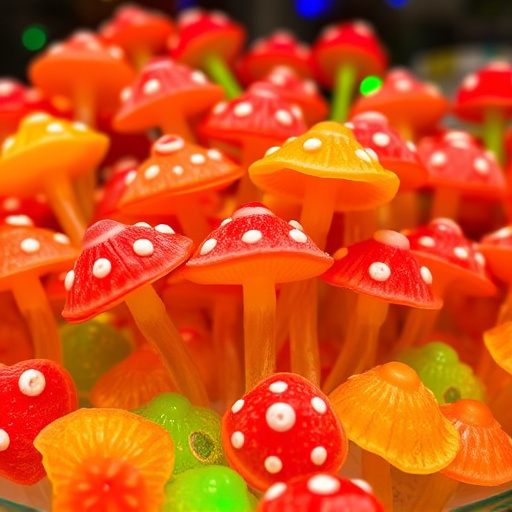
The history of Magic Mushroom gummies dates back to their traditional use in various cultures, where they were employed for spiritual and medicinal purposes. Over time, as society evolved, so did the perception and regulation of psychedelic substances like magic mushrooms. Today, the legality of selling Magic Mushroom gummies varies significantly worldwide. In some countries, they are classified as controlled substances and strictly prohibited, while others have decriminalized or legalized them for medical or personal use.
Safety is a paramount concern when discussing any substance, especially those with mind-altering properties. Magic Mushroom gummies, like their traditional counterparts, contain psilocybin, a compound known for its psychedelic effects. While studies suggest potential therapeutic benefits, unregulated production and consumption can lead to adverse experiences. It’s crucial to approach this topic with caution, emphasizing responsible use and advocating for evidence-based policies that balance accessibility and public safety in the context of Magic Mushroom gummies’ history and evolving legal status.
The history of magic mushroom consumption, intertwined with their modern evolution into gummies, presents a fascinating journey. From ancient rituals to contemporary curiosity, these substances have captivated humans for centuries. As the demand for alternative experiences grows, understanding the legality and safety of magic mushroom gummies becomes paramount. With proper regulations in place, this unique delivery method could offer a discrete and potentially therapeutic option for those seeking expansion of consciousness. The future of magic mushroom gummies for sale lies in balancing accessibility with responsible practices, ensuring their positive impact on personal exploration and well-being.

